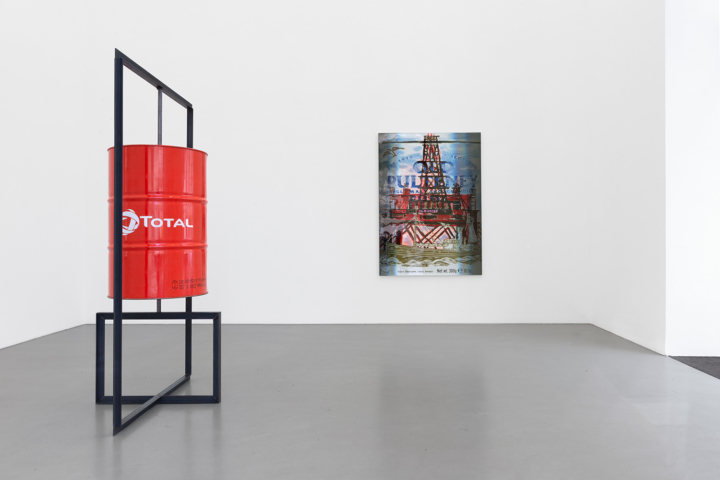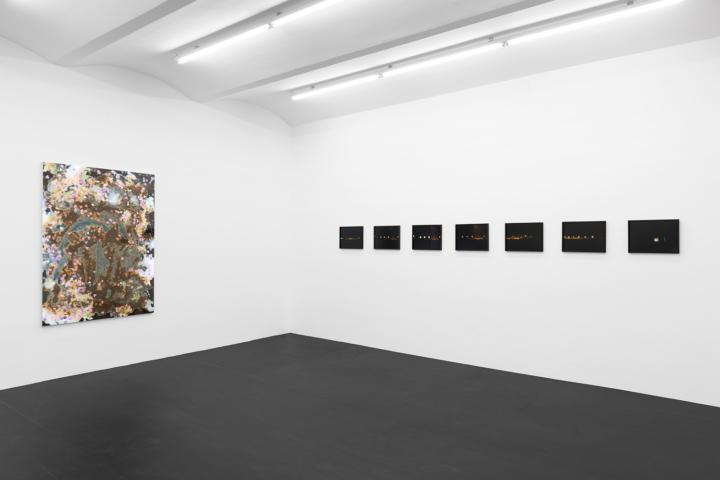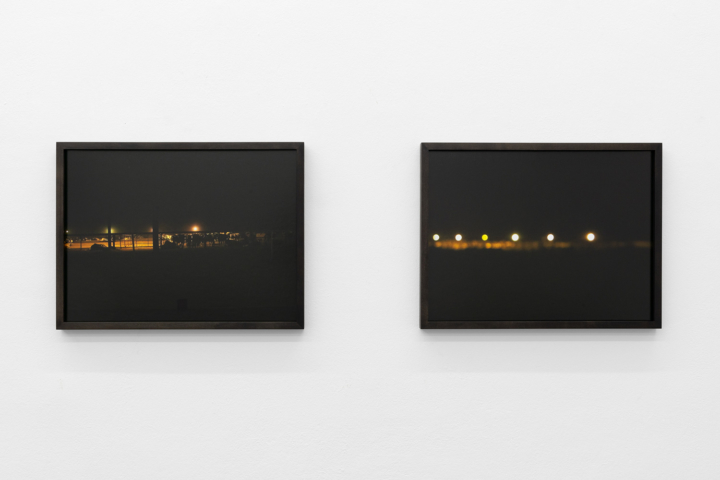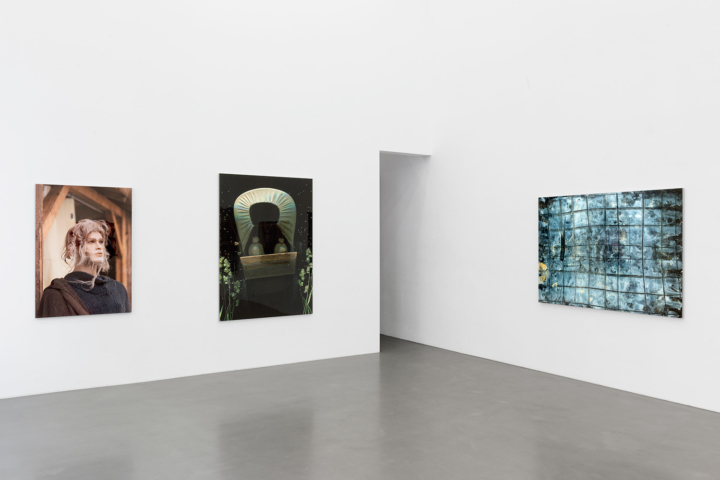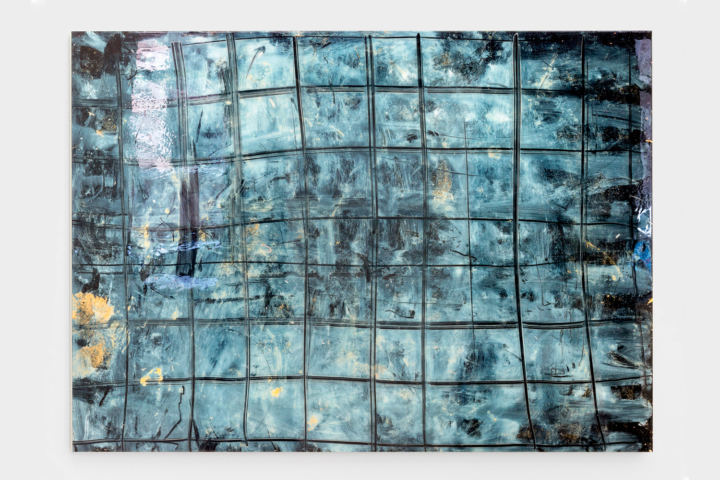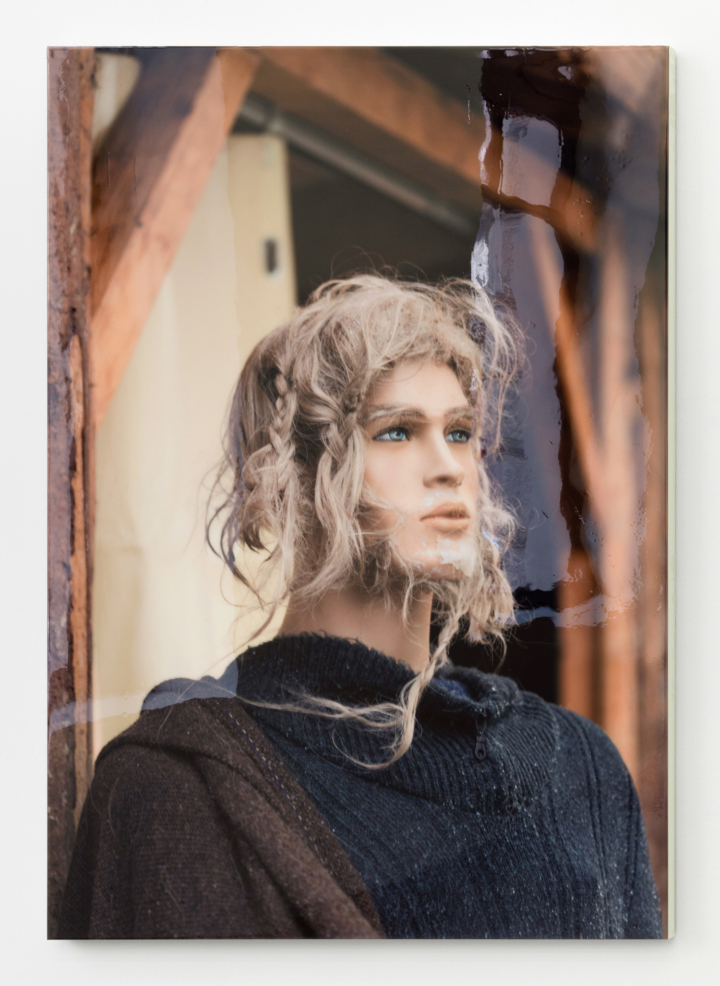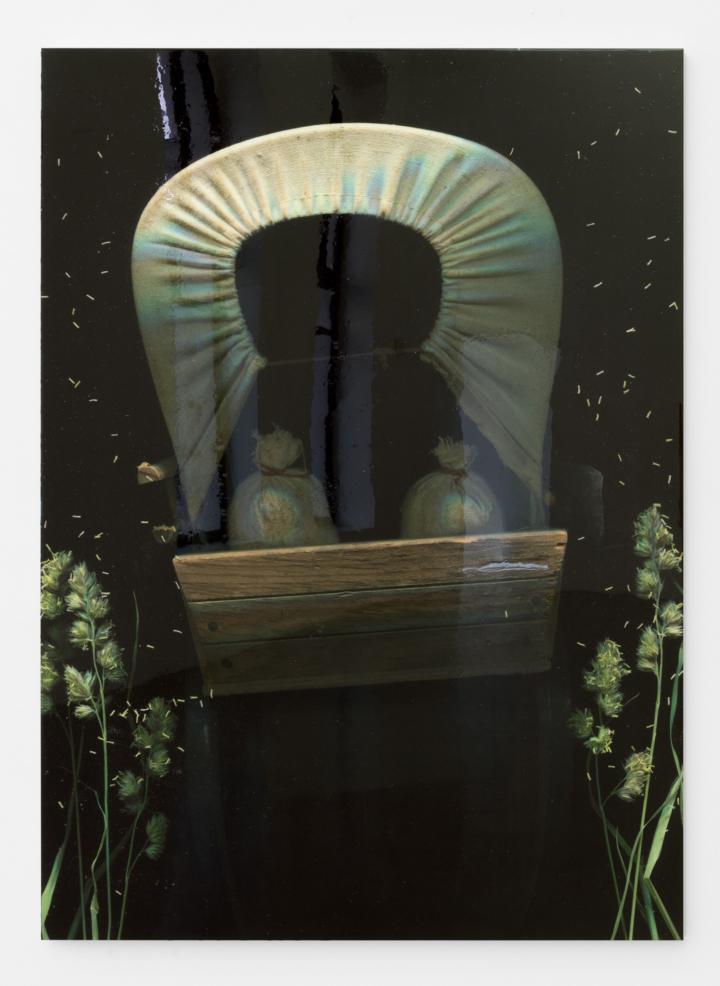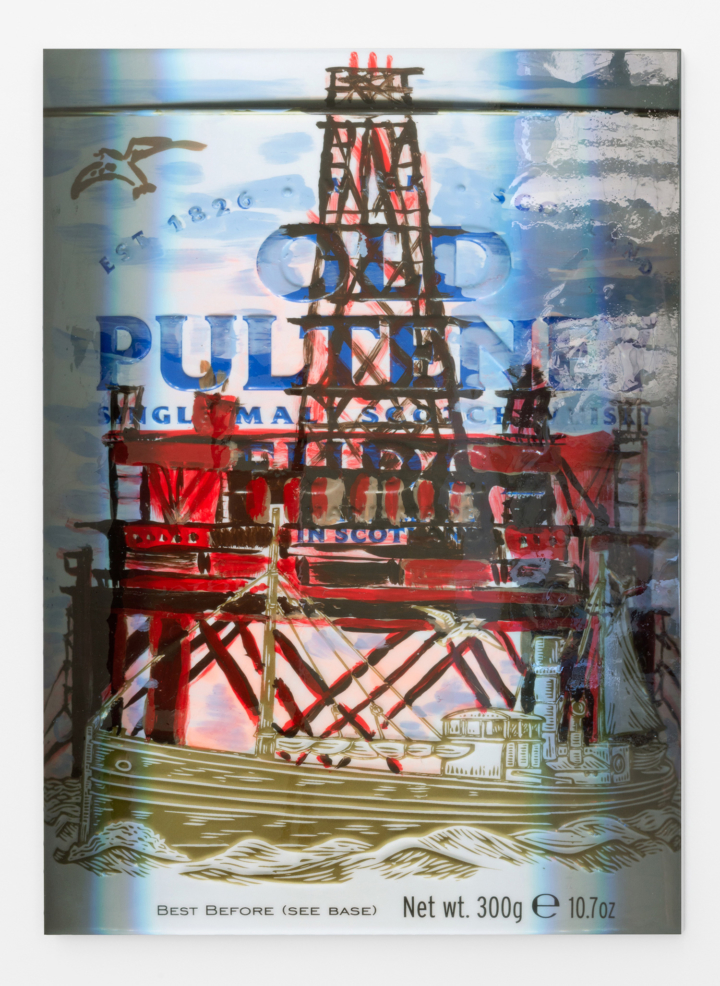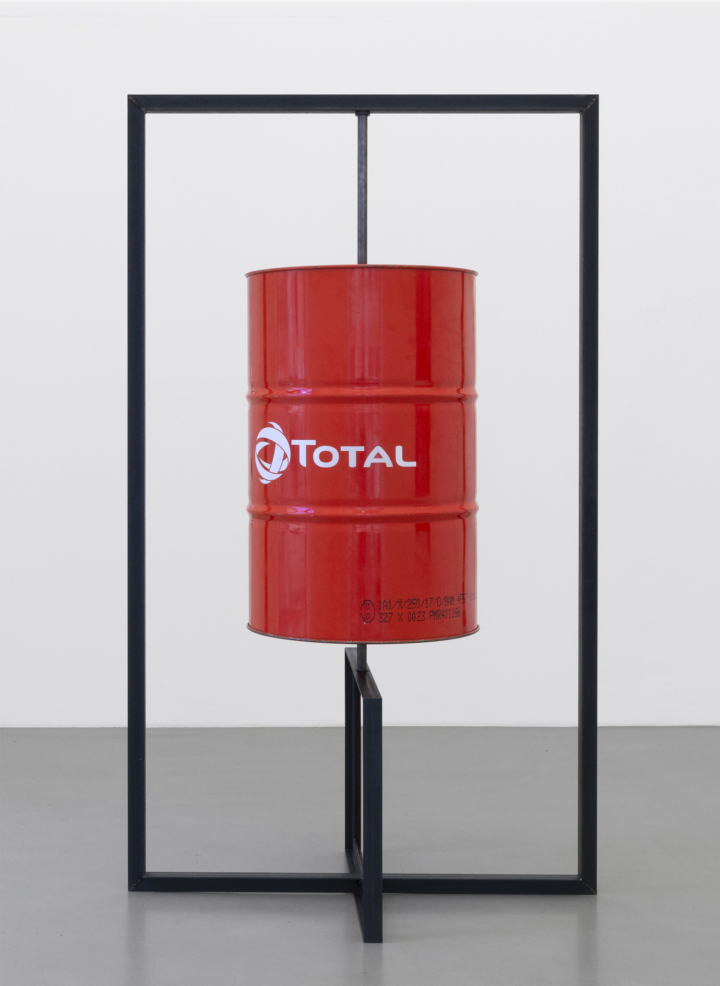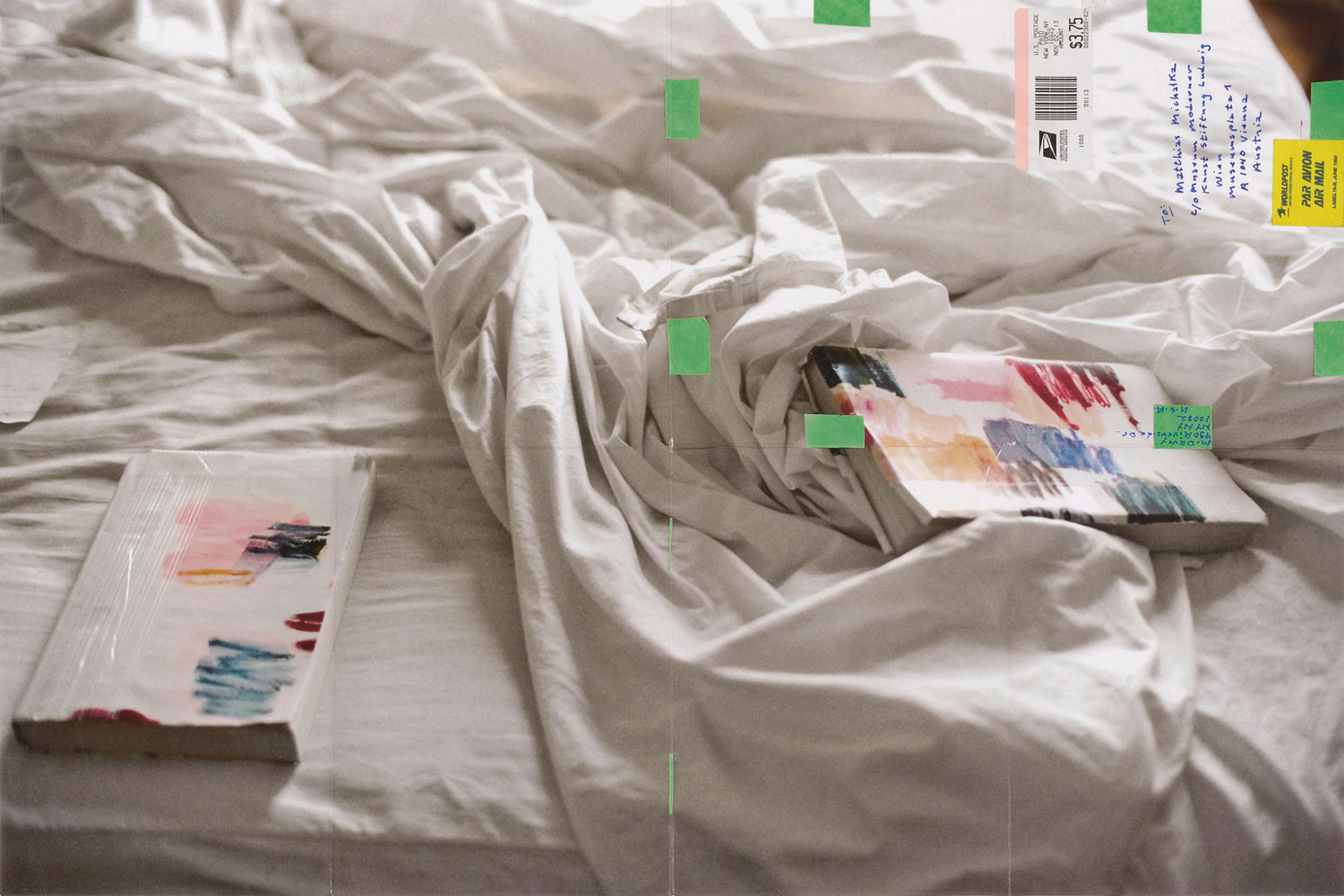A hovering oil barrel rotates in the center of a rectangular steel frame. Prayer Wheel (Total) (2018), a sculptural contraption standing in the entry room of Galerie Meyer Kainer, performs the deifying function of its title, baptizing viewers upon entry as if petroleum were its holy water. As the first work in Lucie Stahl’s exhibition “The Simple Life,” its initial encounter stages the theological power of the commodity’s mastery over nature — a nature branded, packaged, and sold back to its unwitting disciples.
In the photographs that follow, Stahl visualizes cultural myths of aspiration by deploying nostalgic Americana clichés. To produce these works, she placed objects on a flatbed scanner, blew up the unedited scans, and glazed their inkjet-print surface with epoxy resin. This digital photogram-like process highlights both the photographs’ constructedness and the artificial fantasies they each evoke, disorienting relations of depth and scale. A cactus in The Simple Life (2018) towers over the sunrise-pink horizon, while sacks of “100% natural” flour and sugar press up against the frame, nearly spilling into the space of the viewer. In The Longest Ride (2018), the backside of a wagon plunges into a dark abyss. Stahl’s photographs continue the playful critique of Prayer Wheel by conjuring the notion of “manifest destiny,” the nineteenth-century exceptionalist agenda that justified the spatial and economic expansion of America westward as a divine mission. The photographs’ lustrous sheen reflects the viewer, capturing our complicit belief in fictions of freedom that surreptitiously operate on the basis of territory control and commodification.
Amarillo Quality Beef 2015 (2018), a series of documentary photographs on the mezzanine level, shows images of fenced-in cows on the titular Texan cattle farm, and the hazy blur of farm lights in the dark night. The shift of genre, from the constructed scans to documentary photographs, compounds the affective force of the American dream’s dystopian underside: the effacement of life under the marketable slogan of “quality.” Stahl’s exhibition does not propose an alternative to the cultural narrative that it critiques. But it nonetheless maintains that the fantasy of the good life is, like the oil it runs on and worships—crude.

